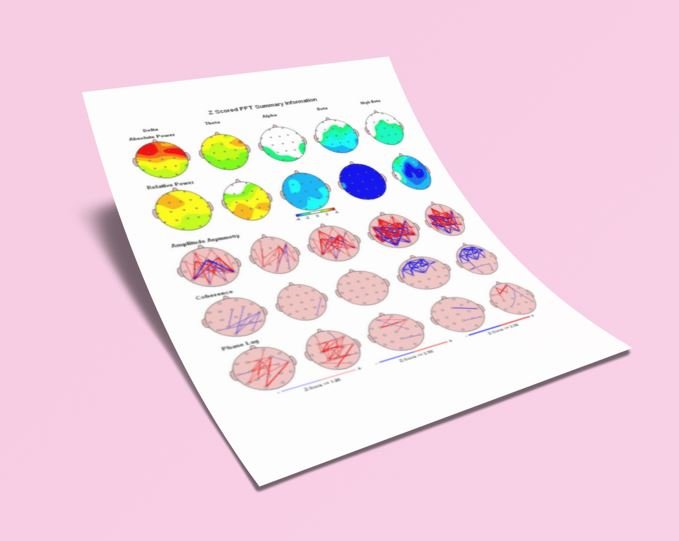How Many Neurofeedback Sessions Do You Need?
Neurofeedback is a powerful tool to help overcome challenges with ADHD, Anxiety, and PTSD.
At Brain Train DFW, neurofeedback is a powerful tool we use to help clients overcome challenges related to ADHD, anxiety, PTSD, and other conditions affecting mental well-being. As a non-invasive and drug-free therapy, neurofeedback can help improve focus, manage stress, and enhance overall brain function.
Neurofeedback is a brain training technique that monitors brainwave activity in real time and provides immediate feedback. During a neurofeedback session, sensors are placed on the scalp to detect electrical activity in the brain. This information is displayed through visual or auditory signals, helping individuals learn to regulate their brainwave patterns for optimal functioning. Over time, this can lead to lasting changes in mood, behavior, and cognitive performance.
How Many Neurofeedback Sessions Are Recommended?
Typically, we recommend completing 20-40 neurofeedback sessions to notice measurable improvements. However, the exact number of sessions can vary from person to person based on the type and severity of the issue being addressed. Since sessions are usually scheduled two to three times per week, many clients start to see positive changes relatively quickly.
The number of neurofeedback sessions required can differ due to several factors. Primarily, it depends on the severity of the condition being treated. In neurofeedback, we compare your brain activity against a normative database of individuals in your age group without any diagnoses or head injuries to understand how your brain functions differently from the average.
By identifying specific biomarkers related to your condition, we can estimate how many sessions may be needed. Consistency and frequency of sessions also play a significant role. Clients who are committed to regular training often see quicker and more pronounced results.
When Will You Notice Changes?
Many clients at Brain Train DFW report noticeable differences after their first session, while others may require several sessions to perceive changes. The principle of neuroplasticity—where "neurons that fire together wire together"—is key here. Repetition helps to solidify these new neural pathways.
Tracking progress is crucial. Our team will adjust the training protocols based on your unique responses to optimize your results. While you don't need to understand the complex neuroscience behind it, your feedback on how you feel after each session is invaluable.
Some clients may experience initial side effects like mental fatigue, which can actually be a positive indicator that the brain is being challenged in new ways. Over time, these feelings generally diminish, and clients often report feeling more energized and noticing significant improvements in focus, mood, and performance.
How Neurofeedback Changes Take Hold
For neurofeedback changes to take hold, the brain needs time to build and strengthen new neural connections, often during sleep. Research shows that new synaptic connections formed during neurofeedback are reinforced while we rest, enabling lasting changes in mood, behavior, and cognitive function.
Neurofeedback can result in improvements in areas like focus, energy, performance, emotional regulation, and clarity. For some clients, addressing multiple interconnected issues may require a multimodal approach, like reducing anxiety first to pave the way for tackling symptoms of PTSD.
While some clients may need around 30 sessions for changes to fully take hold, many experience progress from the start. Those with a single objective may find results more quickly, while others dealing with complex issues might need a longer commitment.
Our training protocols are guided by data from your qEEG brain map and any other assessments. At our Brain Train Center locations throughout DFW, we work with you to develop a personalized training plan tailored to your needs. Progress can be accelerated by maintaining good recovery practices, regular exercise, optimal sleep hygiene, and a nutritious diet.
How Often Should You Schedule Neurofeedback Sessions?
We recommend scheduling neurofeedback sessions three times per week for rapid progress. This frequency allows your brain to consolidate gains while still pushing for continuous improvement. The training sessions are typically short, around 30 minutes, making it easy to fit them into your schedule.
Neurofeedback is a collaborative process, and your input on the changes you notice in your sleep, mood, appetite, and other symptoms is crucial for adjusting your training protocols effectively. The more consistent you are with your training, the faster you’ll see results.
Why Frequent Brain Training Matters
Just like physical exercise, the more often you train, the better the results. Starting with one session a week is beneficial, but training multiple times per week will maximize your progress. Prioritizing neurofeedback for a few months can significantly enhance your quality of life for years to come.
Our certified brain trainers are committed to helping you achieve your goals. Investing time in neurofeedback now can yield lifelong benefits. Consider adding an extra session each week to accelerate your progress and reach your goals sooner.






